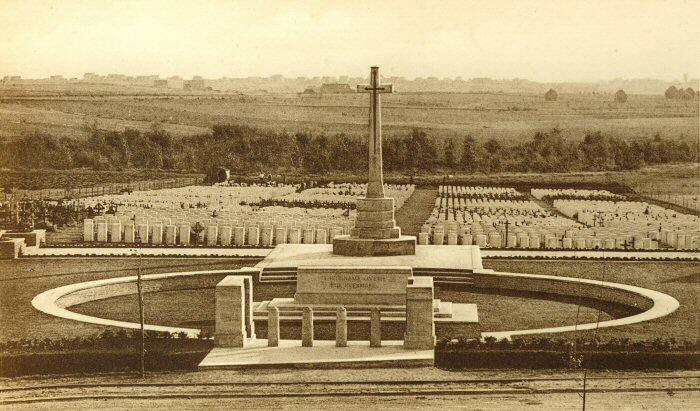Charles Herbert Harrison
Date of birth: 1898
Date of death: 16.8.1917
Area: Thornes
Regiment: Middlesex (Duke of Cambridge’s Own)
Family information: Eldest son of Charles and Emily Harrison nee Hall
Rank: Private
Service number: TF 260038
War Service
On 31st March 1915, he attested at Wakefield for 4 years service in the Territorial Force, joining the Kings Own Yorkshire Light Infantry. Allocated the service number 4524, he joined the 3/4th Battalion for his initial training. Private Charles Herbert Harrison was later allocated service number 201916. On completion of his training he was posted to the 32nd Infantry Base Depot, at Etaples and on 22nd June 1917, sailed from Folkestone to Boulogne. Shortly after his arrival at the Etaples Depot, Charles Herbert Harrison, along with other KOYLI soldiers, was transferred to the 1/8th Battalion, Duke of Cambridge’s Own (Middlesex Regiment).
Allocated the service number 260038, Private Charles Herbert Harrison, joined his new battalion in the Ypres area. The 1/8th Middlesex Regiment, part of 167th Brigade, 56th Division, was at their training camp at Ouderdom preparing for the Battle of Langemarck
On the night of 12th/13th August the 1/8th Middlesex went into the line on the Westhoek Ridge, the 167th Brigade was on the left sector of the divisional front. The Battalion’s objective during this attack was the high ground to the east of the Westhoek-Zonnebeke road. Nonne Bosschen Wood lay in the path of advance. These woods were only blackened tree stumps showing amidst water filled shell holes, from the recent heavy rain. To reach their objective, the 1/8th Middlesex had to move down into the valley from Westhoek Ridge and attack the enemy on the opposite ridge.
On 14th August, the 1/8th Middlesex moved up to the front line south of Westhoek and at 20.00 hrs. on the following day, moved into their assembly positions. During this assembly operation, the German artillery barrage fell on the British line, causing 28 casualties.
At 04.45 hrs on the 16th August, the attack began with the 1/8th Middlesex advancing in three waves, with “D” Company in reserve. As the troops reached the low ground in the valley, they found a sea of deep mud some 30 yards wide, which halted the advance and forced “B” Company to the left, to bypass this obstacle. Consequently, on reaching Nonne Bosschen Wood, they found that they had lost touch with the battalion on their right flank. Unable to advance further, due to the mud and hostile fire from across the valley, “B” and “C” Coy’s tried unsuccessfully to consolidate their positions. By 10.00 hrs, the 1/8th Middlesex had withdrawn to a line halfway between the jumping off point and the Wood Throughout the morning their position was under fire from enemy machine guns and harassed by enemy aircraft. At 13.00 hrs. the enemy guns opened fire on their positions and at 15.00 hrs. launched an infantry attack. However this attacked was stopped by the sea of mud. Early on the 17th August, the remnants of the 1/8th Middlesex was relieved and moved back to the Steenvoorde area, having incurred 220 casualties.
One of these casualties was Private Charles Herbert Harrison who was killed in action on the 16th August 1917. He was initially buried in a small cemetery near to where he fell, however in 1921, he was re-buried by the Commonwealth War Graves Commission, at Hooge Crater Cemetery, near Ypres. There are now 5923 Commonwealth servicemen of the First World War buried, or commemorated, in this cemetery, 3579 of whom are unidentified.
Family Life
Charles Herbert Harrison, born 1898, was the eldest son of Charles Harrison and his wife Emily, nee Hall. On the 25th May 1898, Charles Herbert Harrison was baptised at Holy Trinity Church, Wakefield. At this time, the family lived at 12 Hammond Yard and his father was employed as a driver. Later the family moved to Church Street, in the Thornes district of Wakefield. The 1911 census shows, Charles Herbert living with his parents and three siblings at 6 College Street, Wakefield. His father, Charles Harrison is employed as a labourer with Wakefield Corporation. On leaving school, Charles Herbert Harrison was employed as a riveter.
 Hooges Crater Cemetery
Hooges Crater Cemetery

